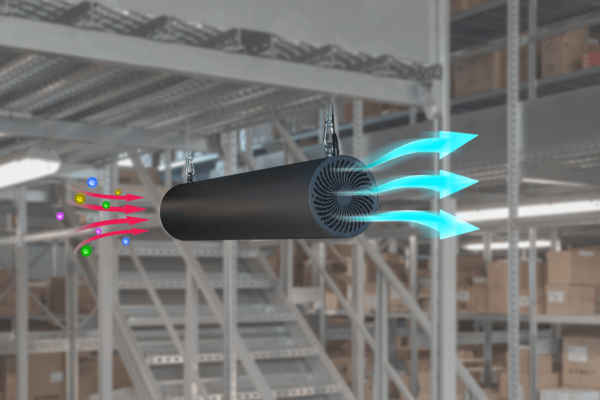Posted: Thursday, 6 November 2025
We believe that by targeting the microbial and chemical compounds
responsible for unpleasant smells, UV technology can significantly improve
indoor air quality across a wide range of environments.
What Causes Odours in Air Systems?
Airborne odours can come from a range of sources:
-
Microbial activity: Bacteria, mould, and
fungi release odorous gases as by-products of growth, especially in humid
or organic-rich environments.
- Volatile Organic
Compounds (VOCs):
Emitted by solvents, packaging, equipment, or cleaning agents.
- Airborne contaminants: Dust, smoke, waste
vapour, or process emissions that carry a distinct odour.
How UV Air Systems Help Reduce Odours
UV systems address odours already present in the air using three primary
mechanisms:
1. Microbial inactivation
UV-C light (254 nm) neutralises airborne bacteria, fungi and viruses,
reducing the biological sources of unpleasant smells.
2. Photocatalytic Oxidation
(PCO)
When combined with catalysts like titanium dioxide, UV light triggers
chemical reactions that break down VOCs and odour compounds into odourless
water vapour and carbon dioxide.
3. Combined UV + Filtration
UV systems used alongside activated carbon or advanced filters remove and
neutralise lingering smells while preventing microbial growth on the
filters themselves.
Where UV Air Systems Add Value
- UV systems are particularly useful in areas where odours are introduced by
environmental conditions:
- Food & Beverage: Odours from
ingredients, cooking, or cleaning processes can remain in the air.
- Aquaculture: Air near tanks or wet
areas can carry strong biological smells.
- Laboratories &
Healthcare:
Chemical vapours and biological materials contribute to airborne odours.
- Commercial HVAC: Odours from occupant
activity or external pollution can circulate through indoor environments.
- Industrial Facilities: Manufacturing and
processing operations often generate persistent VOCs.

System Design Considerations
To tackle environmental odour effectively, UV systems should be designed with
the following in mind:
- Airflow & exposure
time:
Air must pass long enough through the UV or PCO zone for treatment to
occur.
- Target-specific
configuration:
UV dose and catalyst combinations should match the types of odours present
(biological vs chemical).
- Media integration: Combining UV with
activated carbon or other filters improves efficiency.
- Safety & compliance: UV systems must avoid
ozone production and be shielded to protect occupants.
- Maintenance: Regular lamp
replacement and system checks ensure ongoing performance.

Why Alpha-Purify?
Alpha-Purify supplies premium UV lamps and components to OEMs and system
designers worldwide. With ISO 9001-certified production in the UK, we provide:
Our UV technology is trusted in air treatment units across
aquaculture, food production, labs and commercial buildings, helping reduce
airborne odours and improve overall air quality.
If you’re battling persistent odours in indoor air, the issue may lie in the
environment. A UV air system can help neutralise those smells, prevent
microbial build-up, and keep air fresher for longer.
Contact Us to discuss your challenge.